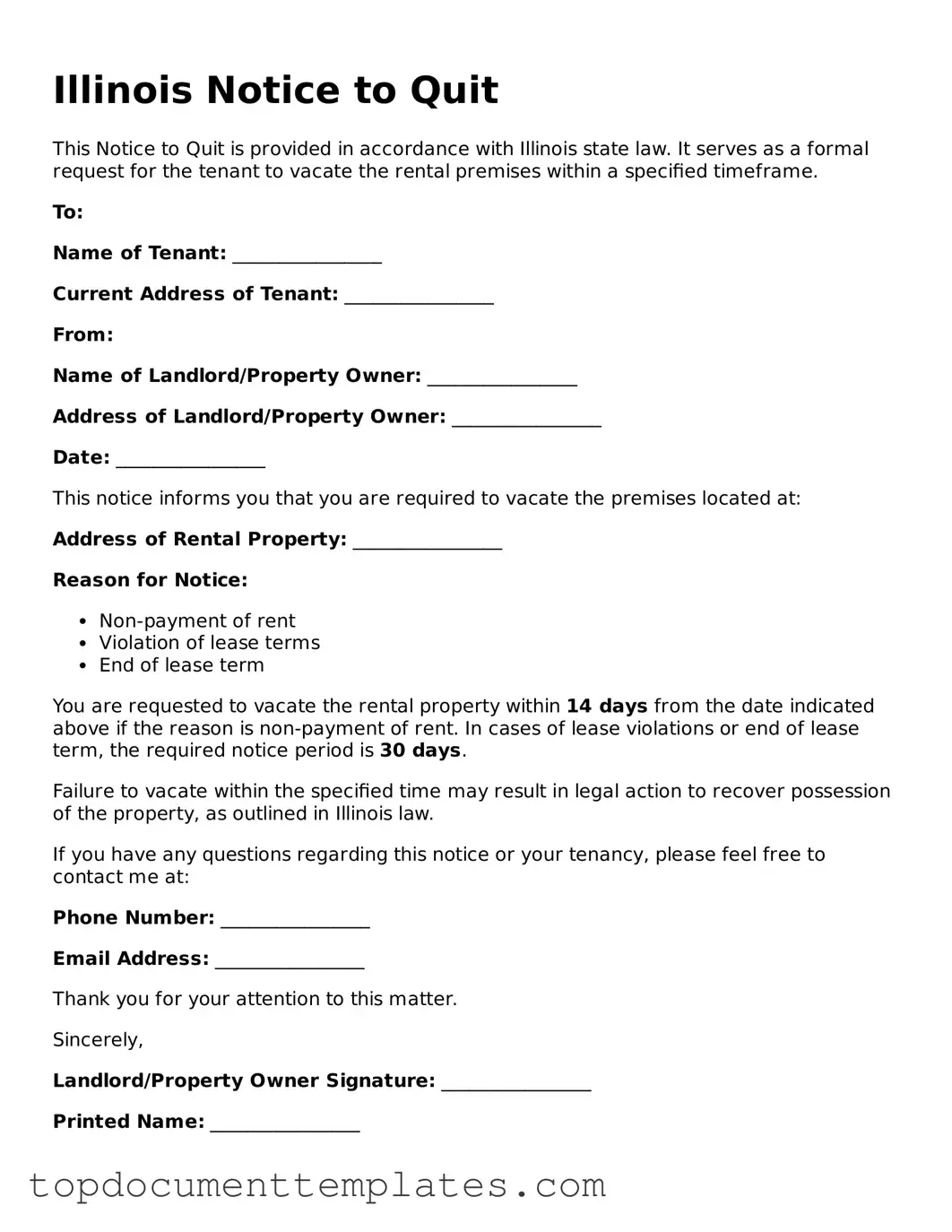The Illinois Notice to Quit form serves as a crucial tool in the landlord-tenant relationship, particularly when a landlord needs to terminate a lease agreement. This formal document notifies tenants that they must vacate the rental property, either due to non-payment of rent, lease violations, or simply because the lease has expired. The form outlines specific details, including the reason for termination, the timeframe in which the tenant must leave, and any applicable state laws that govern the process. It is essential for landlords to follow the proper procedures when issuing this notice to ensure compliance with Illinois law and to protect their rights in the event of a dispute. Tenants, on the other hand, should understand their rights and responsibilities upon receiving such a notice. Knowing what to expect can help both parties navigate this often-stressful situation more smoothly.
